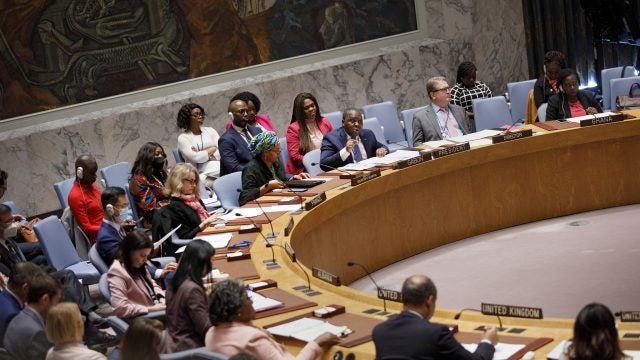
Title: Strengthening European Defense in an Era of US Retrenchment: Insights from the Draghi Report
The European Union faces a critical opportunity to reshape its defense strategy in response to shifting global dynamics and the potential for a more isolationist US administration. The Draghi Report offers urgent recommendations for Europe to enhance its self-reliance in defense. This article contends that the European Union should heed these recommendations, focusing on reducing reliance on the United States, fostering greater cooperation among member states, and strengthening long-term security across the continent.
Introduction
On September 9, 2024, former Italian Prime Minister and European Central Bank President Mario Draghi presented The Future of European Competitiveness, a report commissioned by European Commission President Ursula von der Leyen to assess the structural challenges facing the European economy. The report outlines critical reforms across multiple sectors, emphasizing that defense must be central to Europe’s future competitiveness.
With the ongoing war in Ukraine and a new US administration reassessing its security commitments to Europe, Draghi stresses the need for Europe to become more self-reliant in defense. While these recommendations challenge entrenched national interests and the existing US-EU relationship, a stronger European defense would benefit both Europe and the United States by fostering a more balanced and resilient alliance. This article argues that the European Union must act on these recommendations to enhance its strategic autonomy and strengthen its security framework for the future.
Addressing a Fragmented European Defense Sector
Expanding European defense capabilities requires substantial investment. Draghi’s report calls for a radical transformation of the EU’s government financing model, arguing that insufficient public and private investment has led to a spending gap of approximately five percent of the EU’s GDP per year—around eight hundred billion US dollars. This shortfall undermines the production of essential European public goods, including defense.
These funding shortages come at a precarious time. Regardless of the outcome in Ukraine or future US security commitments, European nations must prepare to counter potential Russian military aggression in neighboring states. Draghi estimates that an additional five hundred billion euros is needed to address security threats. While higher economic growth and productivity could facilitate these investments, excessive austerity following the 2008 financial crisis and the EU’s failure to establish a centralized fiscal capacity have weakened its economies.
Compounding these challenges is the fragmentation of the European Defense Industrial Base (EDIB), exacerbated by inefficiencies in the single market. Dominant national defense firms like Leonardo, Dassault, Thales, and Rheinmetall primarily operate in domestic markets, producing relatively small volumes. This prevents the European Union from achieving economies of scale—critical for reducing production costs and developing effective supply chains across the continent. As a result, Europe lags behind integrated defense markets such as those in the United States, China, or Russia.
This fragmentation forces Europe to source a significant portion of its defense procurement externally. Currently, 78 percent of member states’ procurement goes to foreign suppliers, with US defense firms receiving 63 percent of those funds. Despite efforts to reverse this trend following Russia’s annexation of Crimea in 2014 and its full-scale invasion of Ukraine in 2022, Draghi argues that Europe’s defense industry remains insufficient to meet emerging security threats.
To address these shortcomings, Draghi calls for greater EU integration and political commitment. His report recommends creating a European Defense Industry Authority to centralize procurement, leverage the EU’s large-scale economy, and allow for specialization across member states—akin to the US defense model. Such a move would mark a significant structural shift, as defense policy remains predominantly under national control.
The European Defence Fund, established in 2017, has supported joint defense projects, but procurement remains largely decentralized. The newly appointed Defense Commissioner, Andrius Kubilius, and his team must now define their approach to expanding the EU’s role in defense policy. Their challenge will be to demonstrate the EU’s capacity to coordinate defense industrial decisions while ensuring that military planning remains within the purview of member states and NATO.
While NATO leads in defense planning and resource allocation, it does not manage procurement. The European Union, on the other hand, plays an economic role, including coordinating defense spending across member states. The key challenge will be synchronizing NATO’s strategic planning with the EU’s defense spending decisions, ensuring that Europe develops a more self-sufficient and competitive defense sector while maintaining transatlantic cohesion.
Reimagining European Defense Financing
In an era of historically high public debt-to-GDP ratios across EU member states, the Draghi Report proposes joint EU borrowing as a more efficient alternative to national debt issuance. A collective approach would optimize resource deployment and help meet NATO’s budgetary targets. To achieve this, the report stresses the need to move beyond the siloed approach to defense budgeting, which has historically separated land, air, and naval forces.
Recognizing defense as a European public good, Draghi makes a strong case for financing it at the EU level—either through jointly issued European debt, guaranteed collectively by member states, or through new European taxes. Interestingly, some northern and eastern EU countries that have traditionally opposed debt mutualization are now more open to common defense spending due to the heightened Russian threat. This shift presents a rare opportunity to introduce so-called “defense Eurobonds.”
These bonds could attract additional private sector investment, fuel innovation, and, as seen in the US defense industry, facilitate civilian applications for military technologies while stimulating economic growth. They would not replace national debt issuance but could become a primary financing mechanism for the European defense industry in an integrated system. However, moving in this direction requires both financial and political commitment—something that remains uncertain. Many European nations are also awaiting signals from the US administration regarding its approach to European security, as the US stance on future security guarantees remains unpredictable.
Strengthening European Defense in Alignment with US Interests
The United States has long advocated for stronger European contributions to collective defense. Draghi recommends that EU member states exceed NATO’s two percent of GDP defense spending target—a goal that only 16 out of 23 NATO-affiliated EU states currently meet. If all had reached this target by 2024, an additional 60 billion euros in defense spending would have been realized, representing a 20 percent increase from the 279 billion euros spent by EU member states in 2023. The European Commission estimates that five hundred billion euros in additional defense investments will be required over the next decade to address gaps exposed by the war in Ukraine and to prepare for future security challenges.
A shift toward a more autonomous European defense sector would not immediately alter US involvement in Europe but represent a necessary long-term adjustment. In the short term, European nations lack the industrial capacity to meet current demands, as they must both supply Ukraine and replenish their own stockpiles. However, as the United States increasingly shifts its strategic focus to the Indo-Pacific, Washington has a vested interest in fostering a more autonomous European defense industry to prevent excessive reliance on US security guarantees.
The Draghi Report also highlights the risks of over-reliance on US defense procurement. European countries that purchase major US weapon systems, such as tanks and aircraft, commit to years of maintenance and dependency, limiting opportunities for European suppliers and delaying essential investments in domestic defense capabilities. To ensure long-term resilience, Europe must prioritize its own defense industrial base rather than relying on off-the-shelf procurement.
The report’s recommendations align with NATO and EU objectives. Standardized requirements and best practices would enhance interoperability among national procurements while fostering NATO cohesion. Additionally, Draghi proposes a reinforced European preference principle, encouraging EU-produced defense solutions over non-EU alternatives when using EU funds. While this policy could create friction with the United States, its practical impact would be minimal as it applies only to EU-funded acquisitions—not national procurements, as the EU’s commitment to open markets and reciprocity ensures that US suppliers would still have access to the European market. The overall impact on US exports would be negligible given that EU-funded defense projects represent a fraction of total European defense expenditures.
The Path to European Defense Integration
As European defense policy evolves, the continent faces a pivotal opportunity to translate rhetoric into action. While former EU High Representative Josep Borrell has highlighted the complexities of deeper defense integration, including the fragmentation of national investments and limited cooperation, Draghi emphasizes that economic momentum alone is insufficient; political will is essential for progress.
A practical first step in implementing the Draghi report’s vision would be to initiate smaller-scale projects that aggregate demand across EU member states, much like the European Defence Industry Reinforcement through the Common Procurement Act, which has already been used for joint procurement to support Ukraine. However, long-term success in European defense cooperation will depend on the EU’s ability to navigate political and industrial obstacles.
The 2024 European Defence Industrial Strategy and its implementation through the European Defense Industry Programme (EDIP) will be key in shaping the future of Europe’s defense sector. Realizing this vision requires two fundamental shifts: first, recognizing that the United States will no longer provide the same level of military support; and second, overcoming Europe’s historical reluctance to collaborate on industrial defense. These shifts are necessary to create a more resilient, competitive, and autonomous European defense sector.
The upcoming negotiations over EDIP will test the EU’s ability to secure compromises and initiate European-led projects. While the Draghi Report’s proposals may create friction with the United States over Europe’s shift toward greater defense autonomy, the United States should view these developments as an opportunity to strengthen transatlantic security cooperation. A more self-sufficient European defense sector would bolster NATO’s resilience, reinforce burden-sharing, and allow the United States to shift its strategic focus while ensuring Europe is well-positioned to manage regional crises and navigate growing geopolitical tensions with China and Russia.
…
Astrid Chevreuil is a visiting fellow in the Europe, Russia, and Eurasia Program at the Center for Strategic and International Studies in Washington, DC. Her research focuses on European security, transatlantic relations, French defense policy, and nuclear issues.
Federico Steinberg is the Prince of Asturias Visiting Professor at Georgetown University, a visiting fellow in the Europe, Russia, and Eurasia Program at the Center for Strategic and International Studies, and a Senior Fellow at the Royal Elcano Institute. His research focuses on European Political Economy and Transatlantic Relations.
Image Credit: U.S. Army TSAE by Spc. Emily Houdershieldt, Public domain, via Wikimedia Commons
Recommended Articles

This article explores the uncertain future of Arctic governance amid shifting global geopolitics. It argues that whether Washington and Moscow opt for confrontation or cooperation, multilateralism in the Arctic…

Twenty-five years ago, the United Nations Security Council adopted Resolution 1325, establishing a framework that underpins the Women, Peace, and Security (WPS) Agenda. The Resolution recognized both the…

When we analyze conflicts in the Middle East, we are not analyzing conflicts with isolated impacts but risks for global energy security. Recent conflicts in the Middle East have highlighted…